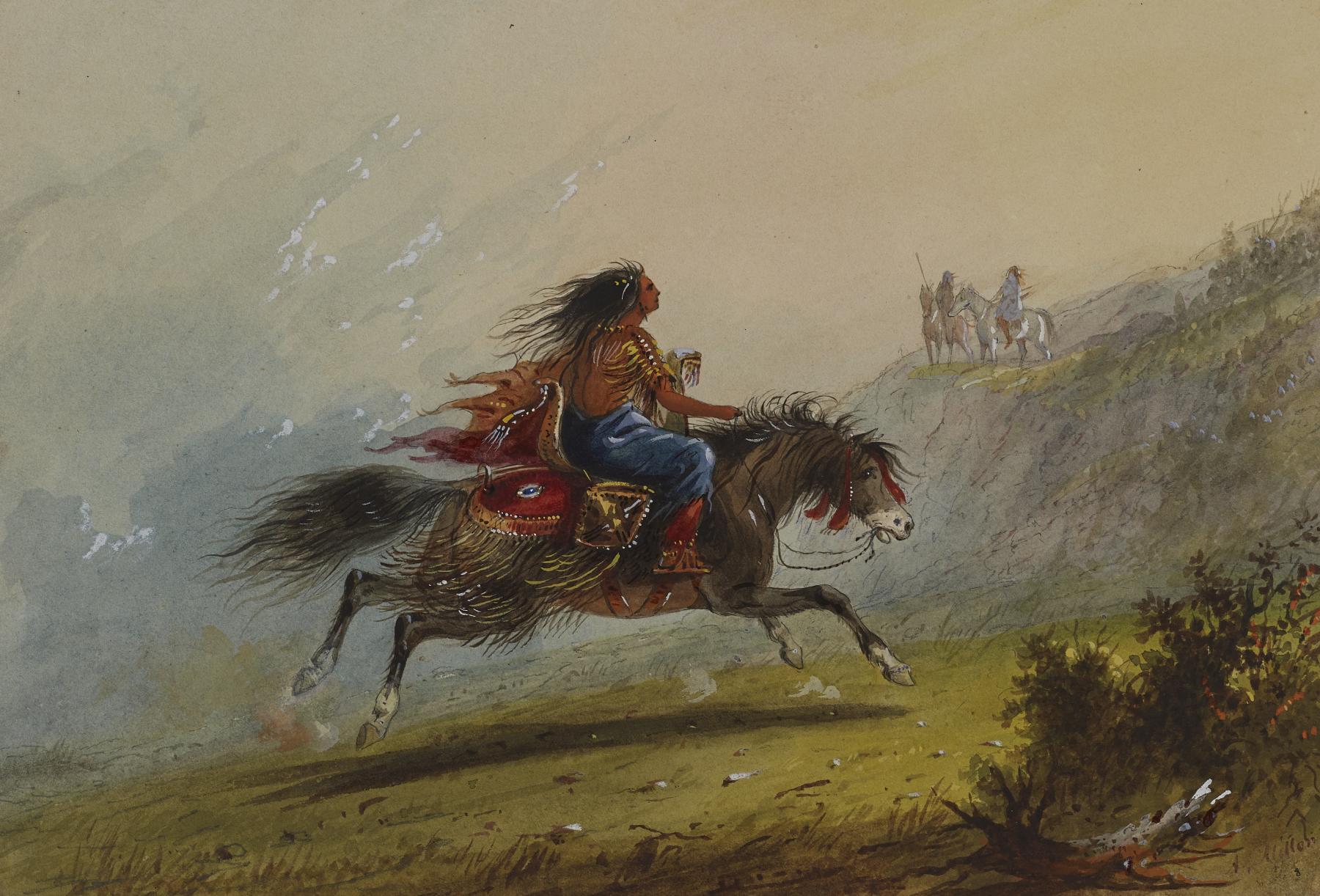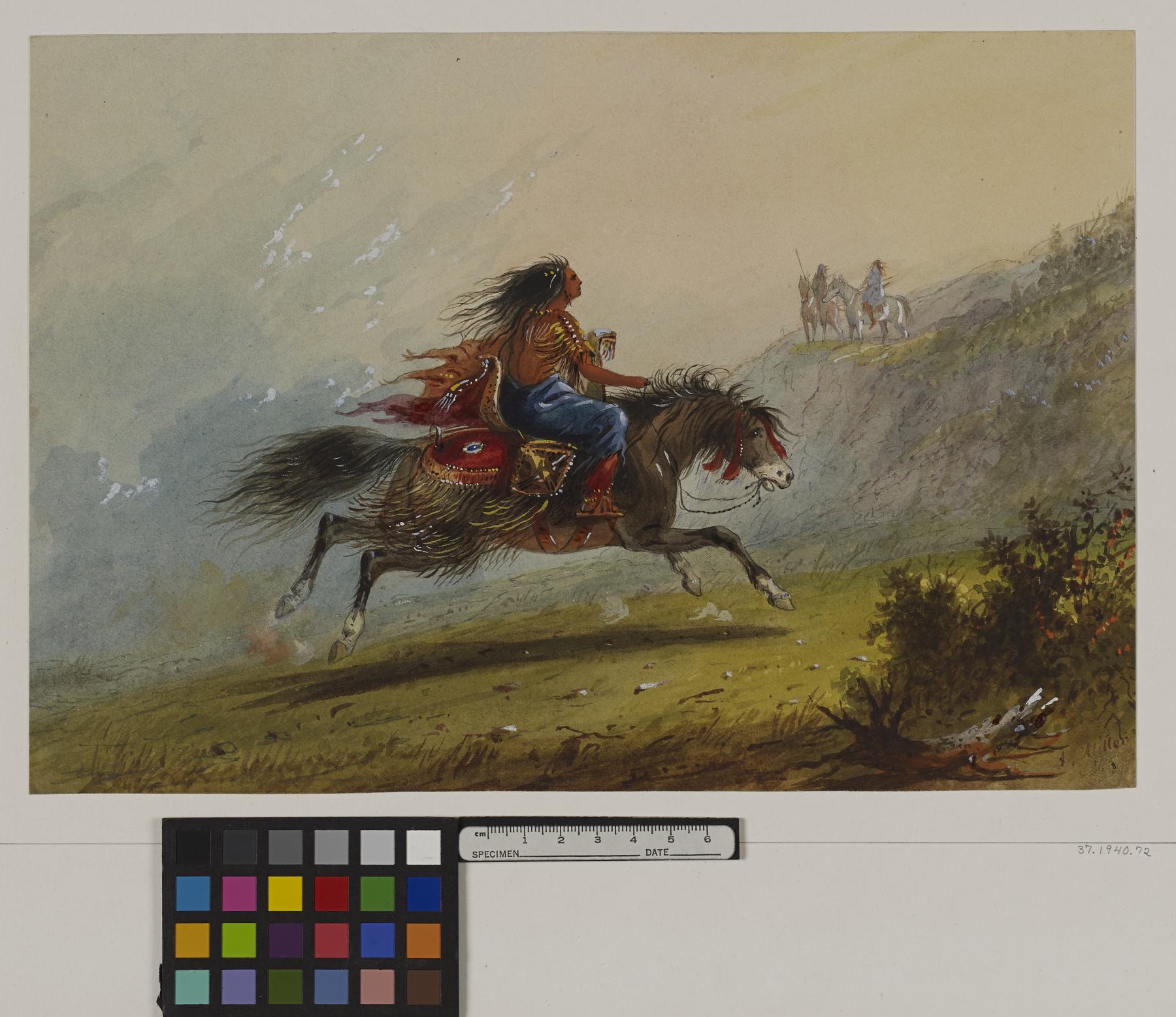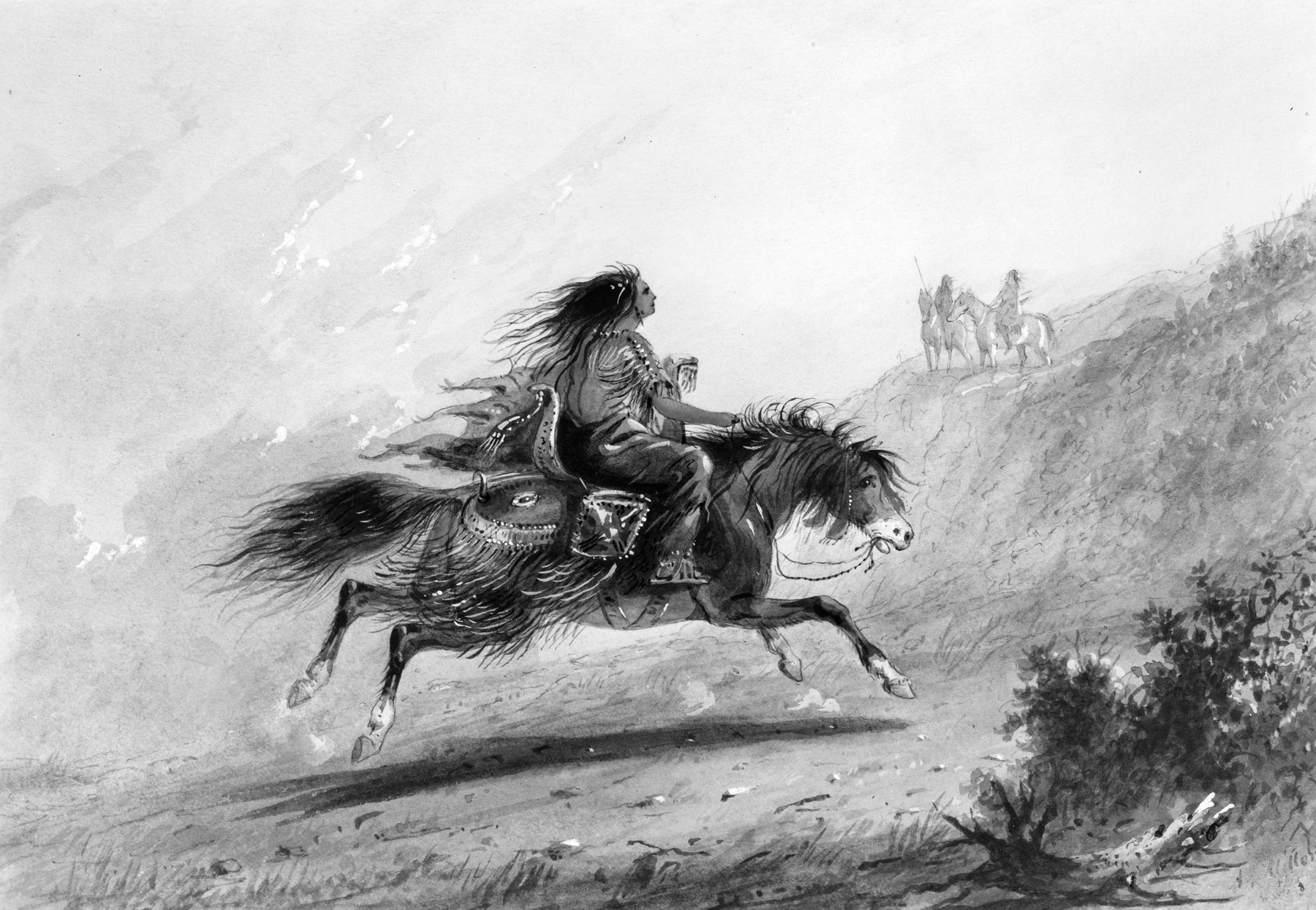An Indian Girl (Sioux) on Horseback
(18th and 19th Centuries )
Extracts from Alfred Jacob Miller’s original text, which accompanied his images of Native Americans, are included below for reference. These words, which shaped how Miller’s contemporaries viewed the watercolors, reveal the racism and sexism embedded in 19th-century exploration and colonization of the western part of what is today the United States.
"To have a good horse and full equipment is the realization of heaven on earth to an Indian girl, never having heard of the Poet's 'Beauty unadorned,' she goes to the other extreme, and piles it on as thick as possible, in the way of ornament; and what with hawk's bells innumerable, and tags of tin fastened to her fringes, the movements of her horse create abundance of noise as she gallops over the prairie. The ornamented cloth attached to the crupper is made of the brightest colors, bordered with porcupine quills and beads, worked into geometric figures by her own hands;- streamers of the same material are pendant from the horse's ears, and 'possibly' sack depends from the saddle to which it is attached;- her feet rest on stirrups of a particular form and make, well brought up. The effect of the whole 'turn out' being extremely picturesque to an artist's eye." A.J. Miller, extracted from "The West of Alfred Jacob Miller" (1837).
In July 1858 William T. Walters commissioned 200 watercolors at twelve dollars apiece from Baltimore born artist Alfred Jacob Miller. These paintings were each accompanied by a descriptive text, and were delivered in installments over the next twenty-one months and ultimately were bound in three albums. Transcriptions of field-sketches drawn during the 1837 expedition that Miller had undertaken to the annual fur-trader's rendezvous in the Green River Valley (in what is now western Wyoming), these watercolors are a unique record of the closing years of the western fur trade.
Provenance
Provenance (from the French provenir, 'to come from/forth') is the chronology of the ownership, custody, or location of a historical object. Learn more about provenance at the Walters.
William T. Walters, Baltimore, 1858-1860, by commission; Henry Walters, Baltimore, 1894, by inheritance; Walters Art Museum, 1931, by bequest.
Conservation
| Date | Description | Narrative |
|---|---|---|
| 4/1/1950 | Treatment | cleaned |
| 3/9/1989 | Loan Consideration | examined for loan |
Geographies
USA (Place of Origin)
Measurements
H: 8 5/16 x W: 12 1/16 in. (21.1 x 30.6 cm)
Credit Line
Commissioned by William T. Walters, 1858-1860
Location in Museum
Not on view
Accession Number
In libraries, galleries, museums, and archives, an accession number is a unique identifier assigned to each object in the collection.
In libraries, galleries, museums, and archives, an accession number is a unique identifier assigned to each object in the collection.
37.1940.72







